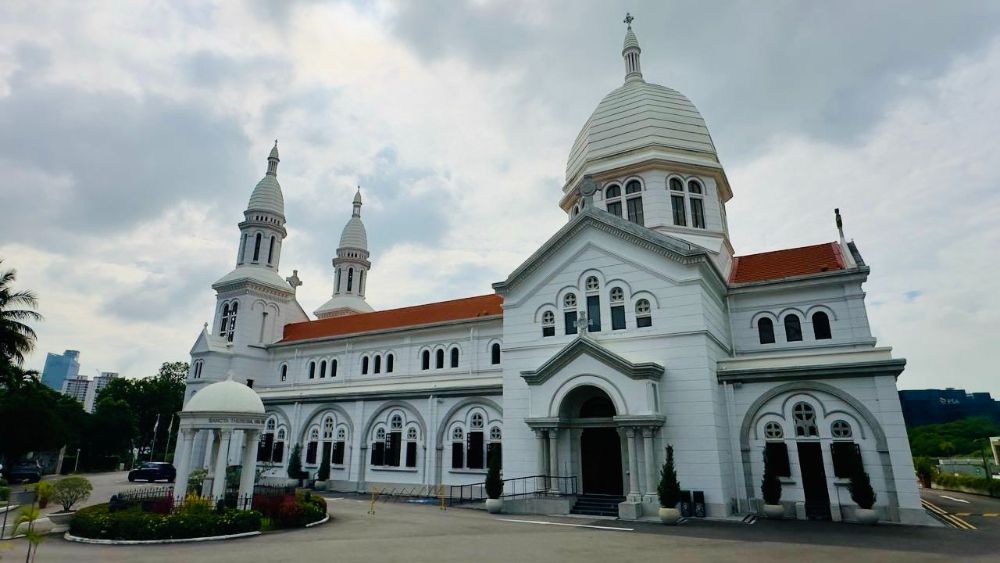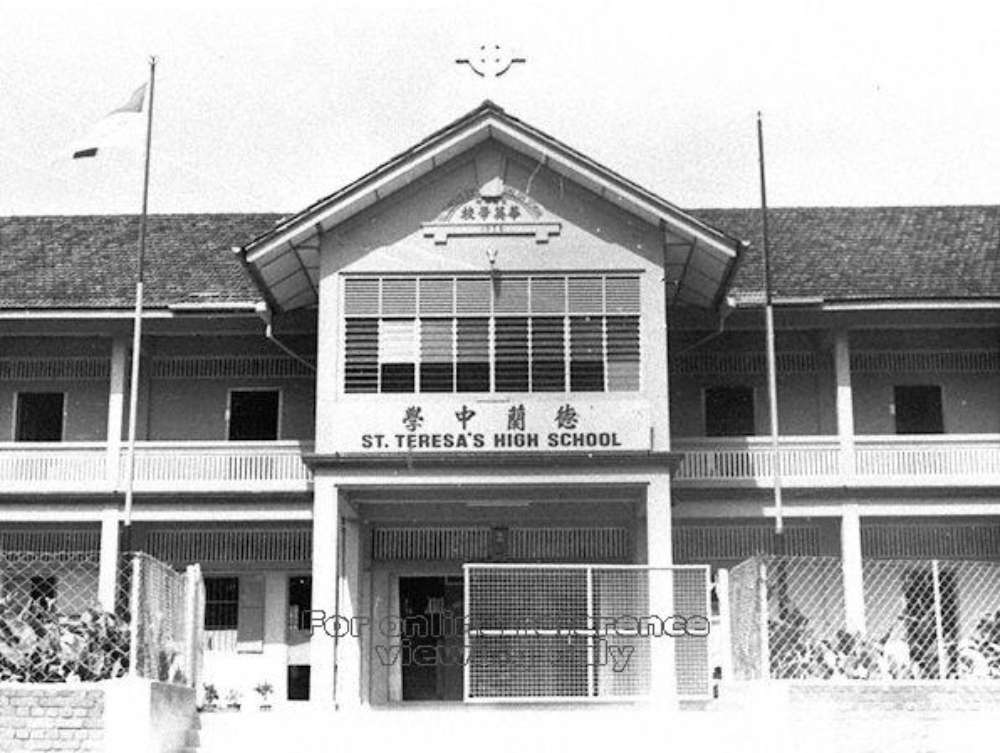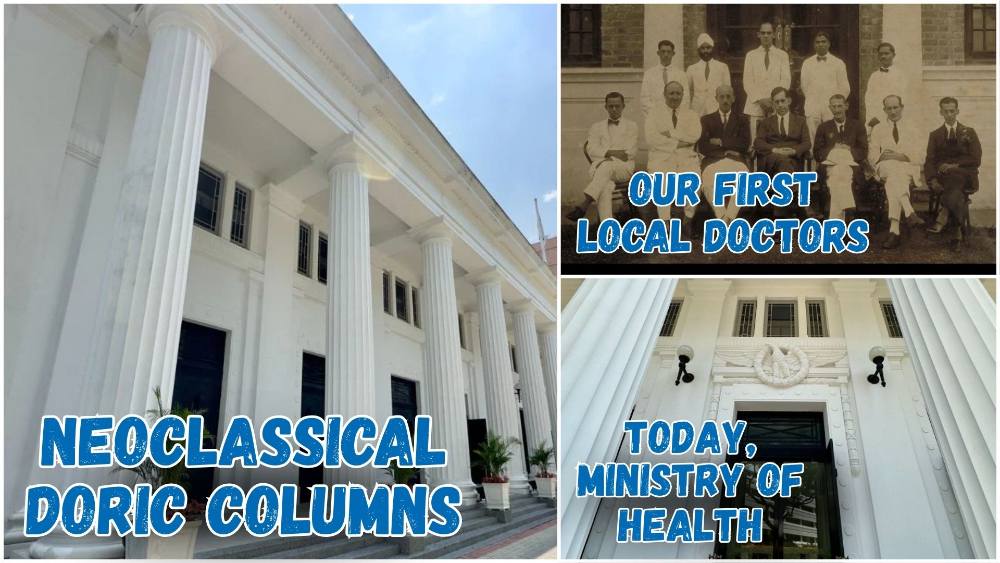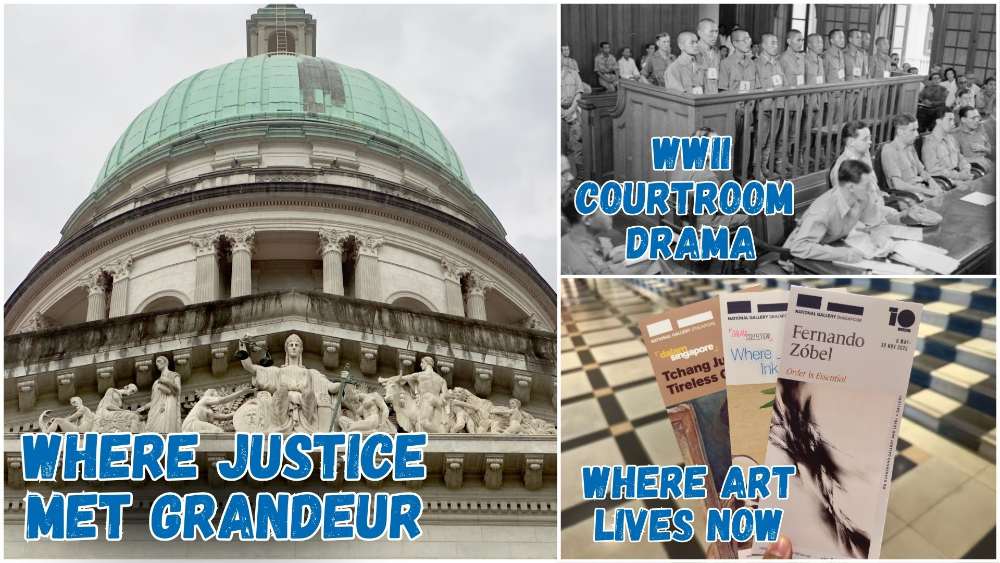National Monuments Of Singapore: Church Of Saint Teresa
What is a National Monument? Who gazettes them? How many national monuments are there in Singapore? To date, the Preservation of Sites and Monuments, a division of National Heritage Board, has identified and gazetted 75 buildings, structures and sites of national significance as an integral part of Singapore’s built heritage.
And we're here to tell you all about them - one National Monument at a time!
You've probably passed by or stepped into more than a few of them without realising they were National Monuments: Al-Abrar Mosque, Asian Civilisations Museum, the Civilian War Memorial, Saint Andrew's Cathedral, the Esplanade Park Memorials, Fort Siloso on Sentosa - no need to plan an itinerary for friends visiting from overseas; just show them this article ✌️
In this edition, we cast a spotlight on one of the earliest Catholic churches to be built in Singapore, the Church of Saint Teresa.
📍 Location
The Church of Saint Teresa was the 57th building to be gazetted as a National Monument. The MRT station nearest to it is Harbourfront.
📅 Significant dates
Dates built:
- 18 Apr 1927: Pierre Louis Perrichon, Bishop of Corona and Coadjutor to the Bishop of Malacca, blessed and laid the foundation stone on Easter Monday
- 7 Apr 1929: The church was officially completed and opened, with a ceremony performed by Bishop Perrichon
Milestones:
- 1935: Father Stephen Lee established Saint Teresa's Sino-English Primary School, which would later undergo a few name changes, the last being Saint Teresa's High School
- 1998: Saint Teresa's High School closed down
- 7 Apr 1954: The church celebrated its silver jubilee (25th anniversary)
- 1979: The church commemorated its golden jubilee (50th anniversary)
- 1983: A columbarium, and a social and educational centre called Saint Teresa’s Centre were founded
Date gazetted: 11 Nov 2009
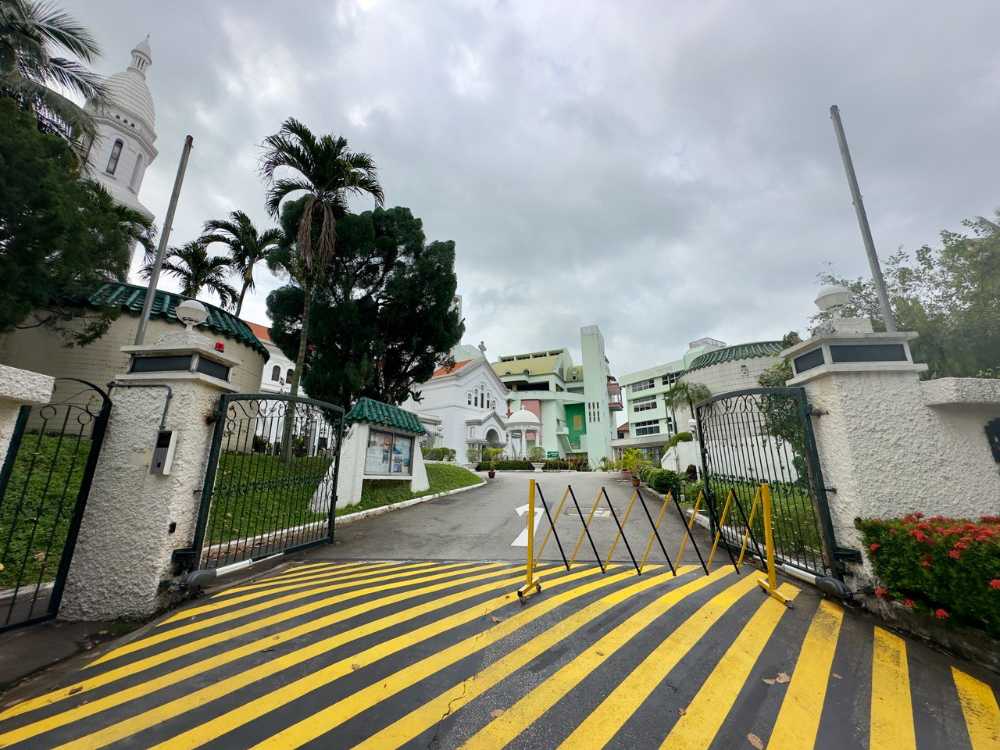 IMAGE: NG KAI
IMAGE: NG KAI
📜 History
Perched atop a small hill, the Church of Saint Teresa was originally built to meet the spiritual needs of Hokkien-speaking Catholics living in the town area.
At the end of the 19th century, the Church of Saints Peter and Paul was the sole church serving Singapore’s Chinese community, with a largely Teochew-speaking congregation, and a group of Tamil Catholics, who later moved to the Church of Our Lady of Lourdes when it was completed. In 1910, the Church of the Sacred Heart was established on Tank Road to cater to Cantonese and Hakka Catholics. Despite this, the Church of Saints Peter and Paul remained crowded during Mass and special occasions.
Although the Hokkien Chinese formed one of the largest dialect groups in Singapore, few converted to Catholicism, likely due to the absence of a church offering Hokkien services. It became increasingly evident that a third parish for Hokkien Catholics was needed.
 IMAGE: NG KAI
IMAGE: NG KAI
Right Reverend Father Emile J. Mariette, MEP (short for "Société des Missions Etrangères de Paris" or "Society of Foreign Missions of Paris", a Catholic missionary organisation), who was based at the Church of Saints Peter and Paul, led the initiative to build this new church.
Fluent in both Hokkien and Teochew, Father Mariette was responsible for the Chinese Roman Catholic community in Singapore. He was assisted by Reverend Father Stephen Lee Boon Teck from Malacca. On 18 Apr 1927, the foundation stone was laid by Coadjutor Bishop of Malacca, Pierre-Louis Perrichon, MEP, though construction had already begun earlier that year.
Sadly, on 13 Mar 1928, Father Mariette was fatally injured when a plank fell on his head from the steeple during an inspection of the site. He was taken to Outram General Hospital but succumbed to his injuries. Father Lee then took over the project’s supervision.
The church was completed and officially opened on 7 Apr 1929. Bishop Perrichon presided over the blessing of the church in front of a congregation of around 6,000 people, including Governor Hugh Clifford, Lady Clifford, and members of the local and Malayan clergy. The ceremony was followed by a Pontifical Solemn High Mass. The church was dedicated to Saint Teresa (Thérèse) of the Child Jesus and the Holy Face from Lisieux, France.
In 1934, the Catholic Church acquired the surrounding land, and a Catholic settlement began to form around the Church of Saint Teresa. On 7 Apr 1935, Father Lee became the first parish priest of the church. In that same year, Father Lee established Saint Teresa’s Sino-English School to educate children in the area. The school was renamed St Teresa's Sino English School when secondary students enrolled in 1965, and later later became known as St Teresa's High School, which closed in 1998.
Father Lee also supported the construction of the Monastery of Christ the King on Bukit Teresa, which became home to the Carmelite nuns in 1938.
The church suffered damage during bombing raids in World War II but was later rebuilt. Over the years, it has served as a sanctuary for many, including women seeking protection from Japanese soldiers and those made homeless by the Bukit Ho Swee Fire.
In 1958, the Apostleship of the Sea, a global Catholic organisation dedicated to serving the spiritual needs of seafarers, established its Singapore branch at the Church of Saint Teresa, where it remains today. Presently, the church welcomes a congregation made up of Catholics from diverse ethnic backgrounds.
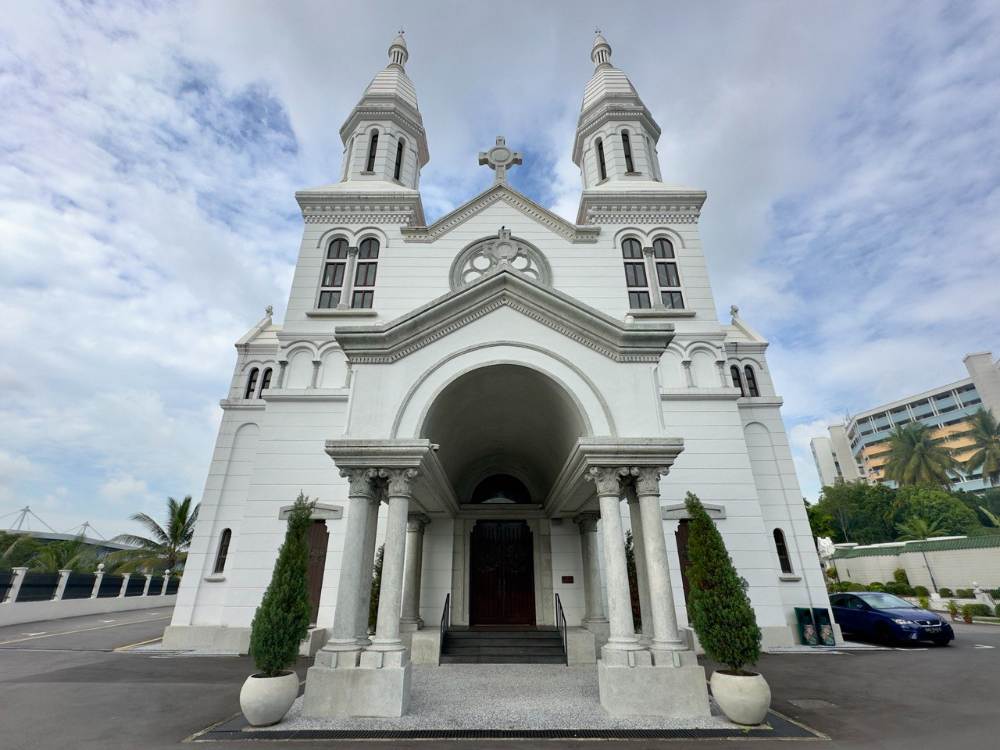 IMAGE: NG KAI
IMAGE: NG KAI
📐 Design and architecture
In Singapore, the Church of Saint Teresa is unique because of its Romano-Byzantine architectural style, characterised by its grand domes, cupolas (rounded domes adorning a roof or ceiling), and arches. Reverend Father Jean M. Ouillon, Procurator of the MEP in Singapore, was inspired by the Basilica of the Sacred Heart in Montmartre, Paris, when designing the church’s initial sketches. The final architectural plans were completed by Emile Brizay, who also designed the Former Ford Factory.
The church’s exterior is defined by a striking dome over the sanctuary, with twin towers capped by cupolas flanking the main entrance. The side windows are set within triple arches and feature decorative designs of a cross within a circle. These windows, along with clerestory windows (the series of windows in the upper part of the nave), provided ventilation before air-conditioning was introduced.
The church’s interior is dominated by a ciborium (canopy) over the high altar, crowned by a cupola. The structure is supported by tall columns, with each pediment featuring a wreath design. Within the wreath are four Greek letters: a chi ("X") superimposed on a rho ("P"), forming the Chi Rho, which is a symbol referring to Jesus Christ; and an alpha ("A") and omega ("Ω") at the sides, which represent the idea of God being the beginning and the end.
Behind the altar, three stained-glass windows with six panels each, made in France, illustrate key events in the life of Saint Teresa of Lisieux. These were gifted by Reverend Father Ouillon, Reverend Father Nicolas J. Couvreur, a retired Procurator of the MEP, and David Wee Cheng Soon, a generous parishioner.
The two belfries above the porch contain five bronze bells, cast in 1927 at the renowned Cornille-Havard bell foundry in Villedieu-les-Poeles, Normandy, France. Each bell is tuned to a different tone, allowing them to produce a harmonious musical chord when rung. These bells were generously donated by Joseph Chan Teck Hee, a devout parishioner, and were named after his five children.
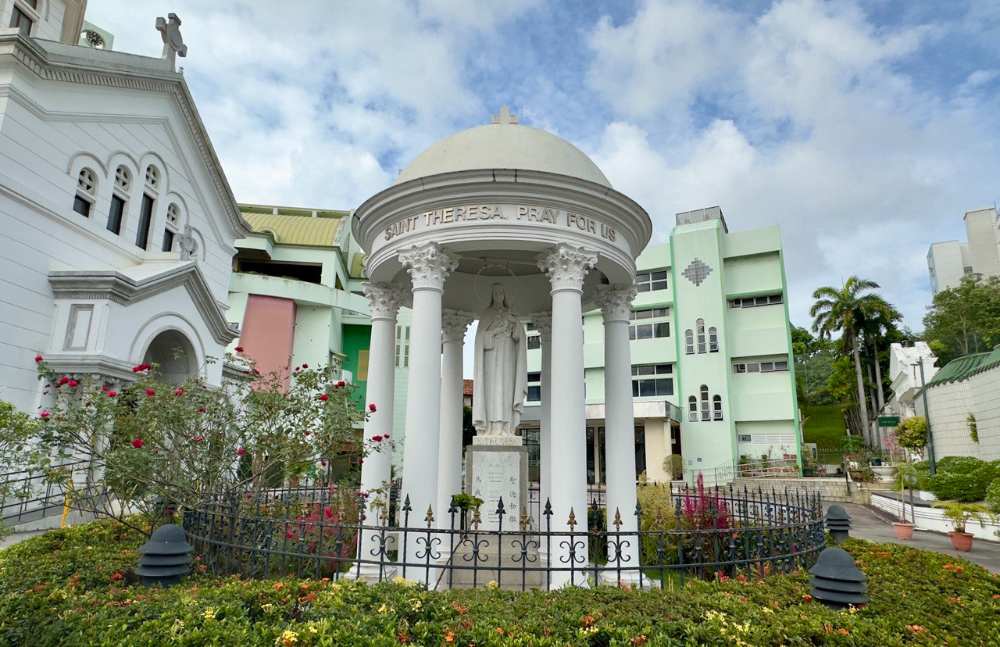 IMAGE: NG KAI
IMAGE: NG KAI
The marble statue of St Teresa at the centre of the driveway was created in 1930 by Raoul Bigazzi, the renowned sculptor and decorator from Florence, Italy.
In 2005, renovation and upgrading works were undertaken at the church, which included the installation of a new altar, air-conditioning system, and audio-visual equipment. During this time, the remains of the founding father, Monsignor Mariette, and the first parish priest, Father Lee, were interred in the columbarium beneath the statue of the Risen Christ.
🕖 Opening hours
Regular visiting hours are daily from 9am to 5pm. Find out more here.
🎟️ Admission
Entry is free.
For the latest updates on Wonderwall.sg, be sure to follow us on TikTok, Telegram, Instagram, and Facebook. If you have a story idea for us, email us at [email protected].







